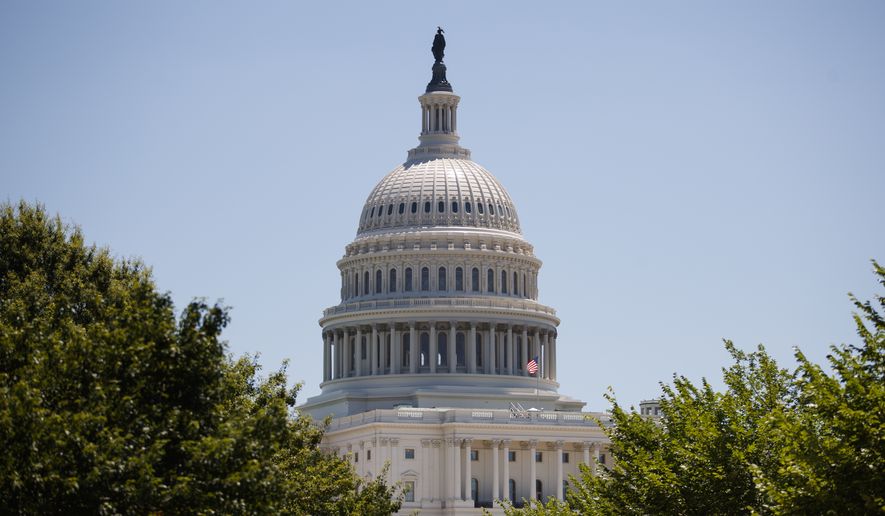The Congressional Budget Office released new projections Tuesday showing a more optimistic view of the economy as it revives from the coronavirus crisis, saying unemployment will rebound faster than the analysts had projected.
The jobless rate will dip to 15.8% over the summer, but that’s still slightly better than the 16% CBO projected about a month ago. And next year unemployment will average 9.3%, which is better than the 10.1% projected in April.
Gross domestic product, meanwhile, will sink 11.5% on a quarterly basis, or 38.7% on an annualized basis. That’s better than the 11.8% and 39.6% drops projected last month.
The estimates have a wide range of uncertainty, as CBO tries to guess what social distancing looks like in the future.
Analysts said they figure social distancing topped out in April, and over the last months of this year will be just a third of what it was at the peak. That still accounts for new waves of virus transmission and new rounds of tightening and loosening, the CBO said.
Digging into the numbers, CBO said home construction has cratered, but should come surging back next year.
Exports are down more than 21% this quarter, but should surge 15% in the next quarter, according to the projections.
Consumer spending also took a big hit, but will come back as well.
“As restrictions on economic and social activities are gradually lifted, the main factor that is suppressing consumer spending during the second quarter will begin to abate during the latter part of 2020. Largely for that reason, CBO expects that consumer spending will rebound and grow at an average annual rate of 22.6% during the second half of 2020,” the analysts said.
The CBO credited Congress’ $2.2 trillion stimulus law with helping that end-of-year consumer spending boom, saying lawmakers targeted the payments so that they’re likely to be spent quickly, rather than stocked away for savings.
Boosted unemployment benefits will also help sustain consumer spending.
Those relief packages, though, are sending federal spending soaring. CBO says Congress increased the federal deficit by a staggering $2.2 trillion in 2020, and will add another $600 billion in red ink in 2021 because of the spending spree.
That’s on top of deficits already projected to reach $1 trillion even before the virus.
Democrats on Capitol Hill say Congress needs to spend more.
“The historic aid packages delivered so far have been critical, but Congress must continue to help families who are stretching every penny, support Main Street businesses struggling to stay afloat, and ensure that protecting the lives and livelihoods of the American people remains the top priority in all policy decisions,” said Rep. John Yarmuth, chairman of the House Budget Committee.
The deficit is one dark spot. Another is the jobs picture which, although better than it looked a month ago, is still grim.
Even at 8.6% unemployment by the end of 2021, it’s still more than double the rate just before the virus slammed into the economy.
Perhaps more troubling is the labor force participation rate, which measures how many people are employed or searching for a job. CBO says the rate over this summer will be 5.2 million people short of what it was at the end of 2019, meaning those people have dropped out of the workforce altogether.
Some of that decline will come back quickly, as people who stopped looking for jobs temporarily return to the search.
But some of it will persist, CBO said, as older workers give up and accept early retirement.
“Given that COVID-19 poses a much higher risk to older people than to younger people, the labor force participation rate of the former group is expected to remain depressed as long as the pandemic continues,” the analysts said.
The labor force participation rate will still only be at 61.5% next year, CBO says. It stood at 63.2% at the end of last year.
• Stephen Dinan can be reached at sdinan@washingtontimes.com.




Please read our comment policy before commenting.